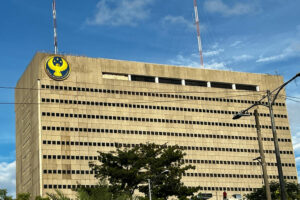TDF yields decline after Bangko Sentral’s reserve ratio reduction
TERM DEPOSIT YIELDS fell on Wednesday after the Bangko Sentral ng Pilipinas (BSP) slashed the reserve requirements for banks and nonbanks.

By Luisa Maria Jacinta C. Jocson, Reporter
TERM DEPOSIT YIELDS fell on Wednesday after the Bangko Sentral ng Pilipinas (BSP) slashed the reserve requirements for banks and nonbanks.
The BSP’s term deposit facility (TDF) attracted bids worth P175.473 billion, below the P190 billion on the auction block and P213.935 billion in bids a week ago for a P200-billion offer.
Tenders for the seven-day debt reached P93.21 billion against the P120 billion auctioned off by the central bank. It was also below the P134.256 billion in bids for the seven-day deposits offered last week.
Banks asked for yields of 6.25% to 6.31%, narrower than 6.2495% to 6.315% a week earlier. This caused the average rate of the one-week deposits to slip to 6.2872% from 6.2878%.
Meanwhile, bids for the 14-day term deposits rose to P82.267 billion from the P70-billion offer and P79.679 billion in tenders a week ago.
Accepted rates ranged from 6.298% to 6.41%, compared with 6.298% to 6.445% a week ago. As a result, the average rate for the two-week deposits decreased by 0.9 basis point (bp) to 6.3737% from last week.
Meanwhile, the BSP has not auctioned off 28-day term deposits for more than three years to give way to its weekly offer of securities with the same tenor.
The central bank uses the term deposits and 28-day bills to mop up excess liquidity in the financial system and to better guide market rates.
“The TDF average auction yields were slightly lower week-on-week… after the latest RRR cut that would infuse about P400 billion into the financial system effective Oct. 25, 2024,” Michael L. Ricafort, chief economist at Rizal Commercial Banking Corp., said in a Viber message.
The central bank on Friday said it would reduce the RRR for big banks and nonbank financial institutions with quasi-banking functions by 250 bps to 7% effective next month.
It will also reduce the ratio for digital banks by 200 bps to 4%; thrift banks by 100 bps to 1%; and rural banks and cooperative banks by 100 bps to 0%.
Mr. Ricafort said that the RRR cut would “increase banks’ loanable funds, reduce intermediation costs that could lead to some easing of lending rates, and allow banks to purchase more bonds, money market and other fixed-income investments that would lead to some easing of yields.”
Mr. Ricafort also noted recent signals from the Philippine central bank of further policy easing.
Finance Secretary Ralph G. Recto, who is a Monetary Board member, said the BSP could further cut interest rates and match the US Federal Reserve’s 50-bp rate cut.
“The Fed cut by 50 basis points (bps) or half a percent. I think we can also do half-a-percent,” he told reporters on Tuesday.
The Federal Reserve last week cut interest rates by 50 bps to 4.75%-5%, the first cut since 2020 that Fed Chairman Jerome H. Powell said was meant to demonstrate policy makers’ commitment to sustaining a low unemployment rate, Reuters reported.
BSP Governor Eli M. Remolona, Jr. earlier said they could cut by another 25 bps in the fourth quarter.
The Monetary Board delivered a 25-bp rate cut in August, bringing the key rate to 6.25% from an over 17-year high of 6.5%.
















